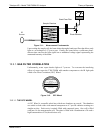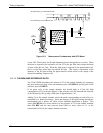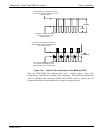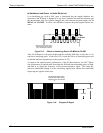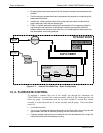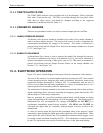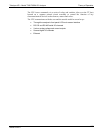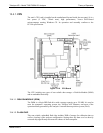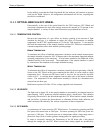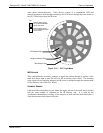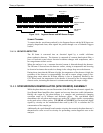
Teledyne API – Model T300/T300M CO Analyzer Theory of Operation
305
13.3.1.1. CRITICAL FLOW ORIFICE
The most important component of this flow control assembly is the critical flow orifice.
Critical flow orifices are a remarkably simple way to regulate stable gas flow rates.
They operate without moving parts by taking advantage of the laws of fluid dynamics.
By restricting the flow of gas though the orifice, a pressure differential is created. This
pressure differential combined with the action of the analyzer’s pump draws the gas
through the orifice.
As the pressure on the downstream side of the orifice (the pump side) continues to drop,
the speed that the gas flows through the orifice continues to rise. Once the ratio of
upstream pressure to downstream pressure is greater than 2:1, the velocity of the gas
through the orifice reaches the speed of sound. As long as that ratio stays at least 2:1,
the gas flow rate is unaffected by any fluctuations, surges, or changes in downstream
pressure because such variations only travel at the speed of sound themselves and are
therefore cancelled out by the sonic shockwave at the downstream exit of the critical
flow orifice.
SPRING
O-RINGS
FILTER
CRITICAL
FLOW
ORIFICE
A
REA OF
LOW
PRESSURE
AREA OF
HIGH
PRESSURE
Sonic
Shockwave
Figure 13-8: Flow Control Assembly & Critical Flow Orifice
The actual flow rate of gas through the orifice (volume of gas per unit of time), depends
on the size and shape of the aperture in the orifice. The larger the hole, the more the gas
molecules move at the speed of sound and pass through the orifice. Because the flow
rate of gas through the orifice is only related to the minimum 2:1 pressure differential
and not absolute pressure, the flow rate of the gas is also unaffected by degradations in
pump efficiency due to age.
The critical flow orifice used in the T300/T300M is designed to provide a flow rate of
800 cc/min.
06864B DCN6314





